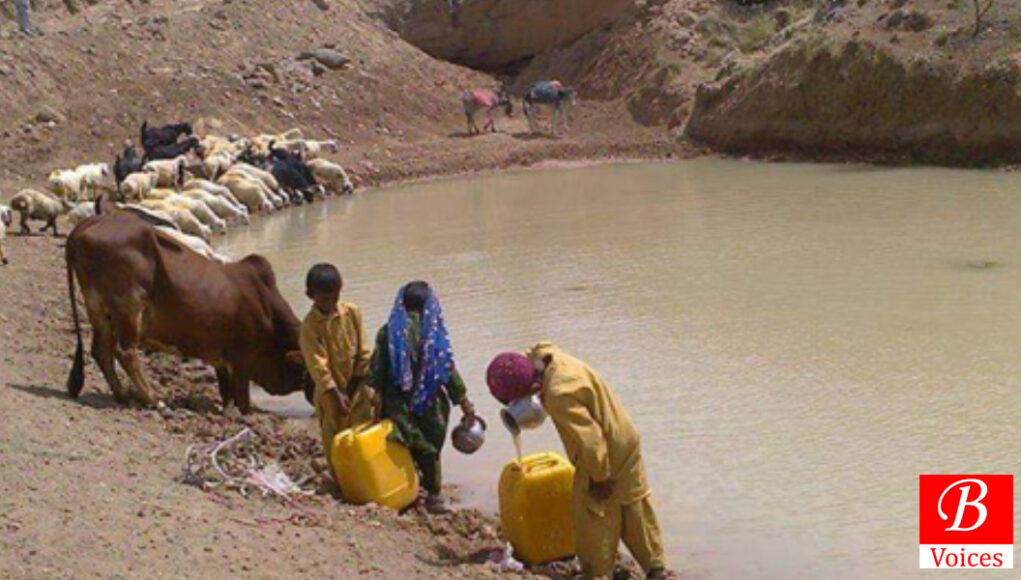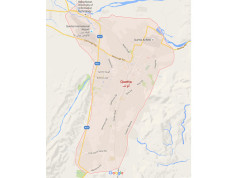NAZEER AHMED
In the modernized world of the 21st century, the Water crisis is an emerging challenge in low and middles income countries. Studies on the water crisis indicate that the situation of water security and availability in Balochistan is below the standards of the Human Development Index (HDI). According to the Pakistan Council of Research in Water Resources (PCRWR), the underground water level declines every new day, in a decade a drop in the level of underground water from 300 to more than 1000 feet is detected clearly, which causes all districts of the province deficient in water. By reviewing the time-series studies it has been found that due to water scarcity the forests are facing natural deforestation and the grasslands have been converted into deserts. Additionally, due to water scarcity disasters take place in Balochistan a couple of years later. On the other hand, there are only a few mega projects of water which include 29 large dams and a small number of mini-projects of water in the area of 347185 square kilometers which makes up 44% of the country. As a result, the scenario is worst and the entire province is kept far behind in development.
The Balochistan government has allocated Rs8.837 billion in the budget to accomplish 510 new projects for developmental grants to assure the systematic supply of clean drinking water to the general public in the financial year 2021-2022.
Read Also: Use of Advanced Technology: Overcoming Water Crisis in Gwadar
Despite the fact that yet these projects are not installed practically but only exist in the paperwork. Furthermore, the entire Sulaiman region is missing from the 510 provincial water projects. This region is left deprived as it was, there is no mega project installed in the region which would pretty contribute to the living of the local people, their livestock, and to the agriculture sector.
Pir Koh, one of the Tehsil of the Dera Bugti is facing absolute water scarcity due to which people are compelled to drink contaminated water which causes Cholera, Diarrhea, and Typhoid diseases in the form of an epidemic. In the recent reports, from 17 April 2022 till 30 May, it has caused the death of 29 humans which include 20 children aged from 1 year to 7 years, 9 are above 7 years, and many unreported animals. Additionally, there are no health facilities for both humans and livestock.
Provincial Disaster Management Authority Balochistan (PDMA) is absolutely passive in the current worst scenario of the Pir Koh which is portraying a terrible picture; however, in this regard, we become failed to find PDMA. Thus Balochistan is left behind province in the respect of development. PDMA does not take any serious measures even after the disaster within the province. Pir Koh is one of the evidence in this regard before us. On the other hand local people particularly youth are voluntarily donating their services to their loved ones to save their lives. They have collected donations to provide clean water to the native people.
Nevertheless, it is a sorry state if we talk about the political will to address the socio-economic obstacles; in this regard, Mr. Shah Zain Bugti who is a Member of the National Assembly (MNA) has remained part of the previous government as well, but unfortunately, his performances arise various questions. He becomes failed either to solve the problem of his own district Dera Bugti. Today, the people of the region are compelled to live under the cloud of miserable circumstances in the form of deprivation of basic necessities and water sacristy.
The Balochistan government is historically Post-disaster solution-oriented which causes a huge loss in the form of man, and animal lives. As well as the destruction of the agriculture sector which is alarming for the local economy.
Consequently, every district of Balochistan is currently confronting water scarcity due to multiple reasons, which include a decrease in rainfall, upon which the majority of the areas of the province are dependent; additionally, lack of dams that can work as storage capacity for rainwater. What is now needed in this regard to address the problem is to take systematic and long-term measures to cope with the circumstances.
The Balochistan government should take proactive and action-based measures to control such sort of disastrous situation. Additionally, the provincial government with the collaboration of the federal government ought to take fundamental long-term measures to cope with the problem of water scarcity, particularly in the Sulaiman region and generally in Balochistan. The roadmap should be based on the construction of Dams, ensuring water supply projects, the chain of reservoirs, installment of well-established water sanitation systems, water storage tanks fair for the population, and construction of different kinds of systematic water pipelines in overall Balochistan.
The writer is an M.Phil. And HEC scholar in the Sociology department at Quaid I Azam University, Islamabad.
Disclaimer: Views expressed in this article are those of the author and Balochistan Voices not necessarily agree with them.
Share your comments!








